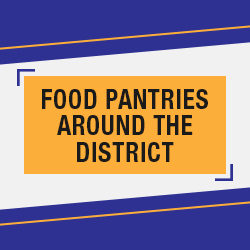Originally published on KPVI Channel 6 on Jan. 27, 2022.
Nutrient loss is one of the most serious pollution threats faced in the U.S., causing a Rhode Island-sized dead zone in the Gulf of Mexico, poisoning local lakes and streams and causing serious health problems for people and domesticated animals.
This year, Illinois lawmakers are considering how to best direct state resources to help reduce nutrient runoff, particularly in the agriculture sector and suburban sewage runoff.
One goal is to incentivize farmers to adopt nutrient runoff reduction strategies through government incentives and other policy changes. It’s an effort to better fulfill a runoff reduction strategy that began in 1995 but hasn’t led to the results lawmakers had hoped for.
Illinois is one of 11 states in the Mississippi River basin that have pledged to develop strategies to reduce the nutrient loads leaving their borders. Illinois aimed to reduce nitrates and nitrogen by 15 percent and phosphorus by 25 percent by 2025, but the latest update showed that nutrient loss increased by 13 percent and phosphorus losses increased by 35 percent, compared with a baseline period from 1980 to 1996, according to the Illinois Nutrient Loss Reduction Strategy Implementation Biennial Report.
The state is making headway on its goal to reduce nutrient discharge from wastewater treatment facilities. From 2019 to 2020, funding tripled for investment in water treatment, resulting in more than $200 million in investment for improvements at wastewater plants. Clear guidance was in place to help wastewater operators understand what improvements needed to be made and how to get funding to make them, according to the report.
Agriculture has not seen the same reductions.
Increased and more intense rains fueled by climate change complicated those nutrient loss efforts, experts say. While developing agricultural strategies to address nutrient loss, they are complicated by geography and financial considerations for the 72,000 farmers who farm 27 million acres across the state.
“Farm conservation is, by far, the most effective way to combat nutrient loss, but it can be costly for individual farmers to implement,” said Michael Woods, division manager of the Division of Natural Resources for the Illinois Department of Agriculture.
Some of the key agricultural practices to combat nutrient loss and help reach the goal of a 45 percent reduction in nitrogen and phosphorus pollution are conservation tillage, testing the soil before applying phosphorus fertilizer, using the maximum return on nitrogen rate for nitrogen fertilizer, putting grass buffers on waterways, and using cover crops.
A state program offers a $5-per-acre discount on crop insurance, but demand for the program is far outpacing the availability even as its funding was doubled this year.
In 2019, the first year of the “Fall Cover for Spring Savings,” the program covered 50,000 acres. It took 12 days for the applications to be filled. IDOA estimated 70 percent of the applicants were new to planting cover crops. In 2022, the acreage limit was doubled to 100,000 acres. It took less than 12 hours to fill the first-come, first-served program.
“It shattered records,” Woods said. “This program is in high demand because it is not cheap to employ conservation methods. This program offsets some of those costs.”
Legislative efforts
State Sen. Ram Villivalam, D-Chicago, is the sponsor of a measure that has thus far stalled in the General Assembly that would have extended state runoff reduction efforts.
“Though this isn’t an issue that hits the front page, it is an important one and one that we should make sure we make a priority,” he said.
Villivalam filed Senate Bill 3471 earlier this month that would extend a program run through the Illinois Department of Natural Resources, the Partners for Conservation Fund, through 2032 and allow it to receive private funds. It would also allow for fund transfers from other state funds to conservation efforts and give the Illinois Department of Revenue better grant-making guidance.
It also increases funding for runoff reduction efforts.
“We have made progress on this in appropriations,” Villivalam said. “We will continue to work to make funding available and to make sure that funding is used appropriately to combat this problem, as well as seeing what other gaps exist.”
The funding will rise over the next 10 years from $10 million to more than $25 million in 2027, extending through 2032.
The bill asks for agricultural management on state-owned and leased lands to support nutrient loss reduction efforts. It also directs much of the current allocation to the Illinois EPA toward implementation of the Illinois Nutrient Loss Reduction Strategy and infrastructure projects for nutrient capture.
In 1995, the Illinois Legislature passed Conservation 2000, a comprehensive, six-year, $100 million initiative designed to promote ecosystem-based management of privately held land in a public-private partnership and create partnerships between the Department of Agriculture, Environmental Protection Agency and Department of Natural Resources. It became Partners for Conservation in 2008, but it was scheduled to expire in 2021 as legislation to extend it failed to pass.
The latest legislative effort will extend that program and provide additional guidance on setting goals and targets to advance conservation efforts, expand the eligible uses of the Partners for Conservation Fund, including funding for the Fall Covers for Spring Savings Program, and enhance reporting to the Legislature on progress through the Nutrient Loss Reduction Strategy.
The bill will not only help align state programs with the NLRS, but it creates a framework that will help agency staff direct state and federal conservation dollars toward nutrient loss programs.
“It creates partnerships that would measure data, track success and devise strategies that would allow for easier application to get those federal dollars,” said Max Webster, Midwest policy manager for American Farmland Trust.
It would also stabilize state funding for the programs allowing for matching federal money, Webster said.
Villivalam filed the bill Jan. 19, and it had not received a committee assignment as of Wednesday.
Other obstacles
Participation in voluntary incentive programs, like the cover crop program, might not be enough to meet the goals in the NLRS, said Catie Gregg, agricultural program specialist for Prairie Rivers Network.
“If we continue to not see improvements, or things are getting worse, as seen in the 2021 NLRS report, we will need to look at a broader range of strategies that may include both voluntary programs and
requiring certain best management practices,” Gregg said.
Conservation tillage, maximum return rate for nitrogen, and testing the soil for phosphorus before applying fertilizer should be part of those strategies, Gregg said.
For Illinois to meet those nutrient loss reduction goals, agriculture programs should be scaled up, Gregg said. New agriculture programs are at the scale of millions of dollars, whereas wastewater treatment facilities have invested hundreds of millions of dollars in reducing nutrient pollution in their plants, often funded by the state revolving fund.
“It is not surprising that we are seeing nutrient pollution reductions in wastewater, but not from agriculture,” Gregg said. “We will need that same level of funding if we are to see reductions in runoff at the same scale from agriculture.”
Farmers want to protect their land and environment, but they have to consider the bottom line when starting a new regimen on their farms, such as planting cover crops or installing buffers, said Lauren Lurkins, director of natural and environmental resources for Illinois Farm Bureau. Financial incentives can offer inducement to try conservation measures.
“Each year, every farmer will have to look at their own situation to decide. This year, everything is higher; seeds, fertilizer, everything. They may decide that the program alone isn’t enough to justify the additional costs,” Lurkins said.
Rep. Charlie Meier, R-Okawville, who farms 1,600 acres in Washington County, echoed that sentiment.
Ten years ago, when cash crop prices were high and fertilizer prices were reasonable, Meier said, it made sense to try to maximize yield. This year, the fertilizer prices are high and supplies are harder to source, making it a good time to push conservation efforts. But Meier points to inadequate state agriculture budgets and a lack of commitment to address the nutrient loss problem.
The soil diversity across the state also means that incentive programs must allow for flexibility so the farmer can be successful and continue to use conservation methods after the incentive period ends.
“Farmers compete. You look at your neighbors’ fields and you want to do as well or better than they are,” Meier said. “Farmers don’t want mandates. Farms across the state are different. What works for a farmer in Champaign County may not work in Monroe County. Farmers want flexibility to do what works for them.”
Meier participated in the federal Conservation Stewardship Program on his farm – money that came from the U.S. Department of Agriculture Natural Resource Conservation Service. He created buffers along the waterways to absorb nutrients, targeted areas for fertilizing with testing and GPS, planted cover crops in the fall where he will plant cash crops in the spring and milkweed for pollinators in less productive areas.
But the federal program guidelines can be complicated and the paperwork and documentation can be daunting, especially for farmers who also work off of the farm, according to Rob Myers, director of the Center for Regenerative Agriculture at the University of Missouri.
And Meier said successful implementation of any cover crop program requires farmers to be continuously learning about technology and employing what works for their farm, being adaptable and embracing change.
Some Illinois farmers are making changes, not only to reduce runoff but to lower their costs and improve their soil quality and improve their yields and the quality of the yields while reducing their use of fertilizers.
Mark Litteken operates a hog and cattle farm on 120 acres in Clinton County. He also grows corn and soybeans. Litteken started planting cover crops in 2010.
Litteken chose not to use the state or federal programs so he could be more flexible in his choice of cover crops and how he used them. He grazes his cattle on the grass, clover and radishes he grows.
“This isn’t really new. This is stuff my grandfather used to do,” Litteken said. “There is science behind it, but you also have to know your goals and your ground.”




